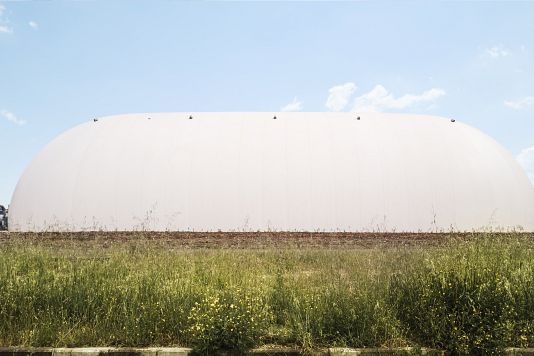
An emerging application of 3D printing technology is fabricating entire homes through additive manufacturing. Early adopters demonstrate that 3D printing residential buildings carry significantly lower embedded carbon than conventional construction methods.
By optimizing materials and printing processes, 3D home printing could provide affordable, efficient, low-carbon housing to growing populations if adopted at scale.
Also known as additive manufacturing, 3D printing builds structures by depositing materials layer by layer according to digital models. Concrete is typically extruded through a moving print nozzle onto a substrate, hardening upon deposition to gradually form walls and roofs of low carbon 3D printed homes.
Companies pioneering low carbon 3D printed homes include Icon, SQ4D, and Mighty Buildings. Their printed concrete or polymer designs streamline manual labor of framing, insulation, and finishing. Architectural designs are also easier to customize versus cookie-cutter manufactured units.
But the sustainability benefits are among the most significant advantages over current construction. Architect Sam Ruben, an early adopter of 3D printing for eco-homes, states that 3D printing can reduce lifecycle emissions by over 50% compared to standard building techniques.
Part of the savings comes from more efficient material usage. Conventional construction methods are wasteful, generating excessive scrap materials that go to landfills—3D printing deposits only the needed amount layer-by-layer, eliminating waste.
Printing also allows easier integration of recycled components like crushed concrete aggregate into prints, diverting waste streams. And lightweight printed structures require less embedded energy to transport modules. Optimized print geometries better retain heat as well.
But the biggest factor is speed – printed homes can be move-in ready in days rather than weeks or months. A standard SQ4D home prints in just 8-12 hours of machine time. Accelerated production means less energy consumed over the total construction period.
And speed has financial benefits, too, reducing the logistical costs of prolonged projects. Combined with simplified labor, 3D printing can cut estimated construction expenses up to 30%. Those cost savings make printed homes more accessible to low-income groups while stimulating large-scale adoption.
To quantify benefits, Mighty Buildings completed a life cycle assessment comparing their printed composite polymer dwellings against conventional homes. They estimated their product cut emissions by over one-third during materials and construction. Waste production dropped by over 80%.
Such data helped the company achieve third-party verified EPD declarations certifying their low carbon 3D printed homes. Mighty Buildings believes printed homes could eliminate over 440 million tons of carbon emissions if comprising 40% of California’s housing needs by 2030.
Despite advantages, barriers remain to limit widespread 3D printed housing. Printed buildings still require finishing like plumbing, electrical, windows, and roofing. Developing integrated printing around and including those elements will maximize benefits.
High upfront printer costs also impede adoption, though expected to fall with scaling. And building codes need updates to cover novel printed structures despite proven duribility. Some jurisdictions like California are pioneering efforts to add low carbon 3D printed homes as approved models in housing codes.
But if technical and regulatory hurdles are resolved, additive construction could offer meaningful emissions cuts. With global populations projected to add 2 billion new urban dwellers by 2050, low carbon 3D printed homes may become a go-to sustainable building technique, especially in growing developing countries.
The urgent need for dense, low-carbon housing solutions to accommodate global populations makes 3D printing’s advantages stand out. Printed homes advance from gimmick to viable strategy against climate change.
Eco-conscious homebuyers on a budget have a new choice – low carbon 3D printed homes made from low-carbon cement. A new housing tract in Round Top, Texas has introduced small dwellings printed using concrete that produces just 8% of the carbon emissions of traditional Portland cement manufacturing.
Habitat for Humanity last year unveiled its first low carbon 3D printed home in Williamsburg, Virginia. The project represented Habitat for Humanity’s first completed 3D printed home in the country.
By combining 3D printing techniques with more sustainable cement mixtures, homebuilders can reduce the carbon footprints of affordable printed housing even further.
Source Happy Eco News


